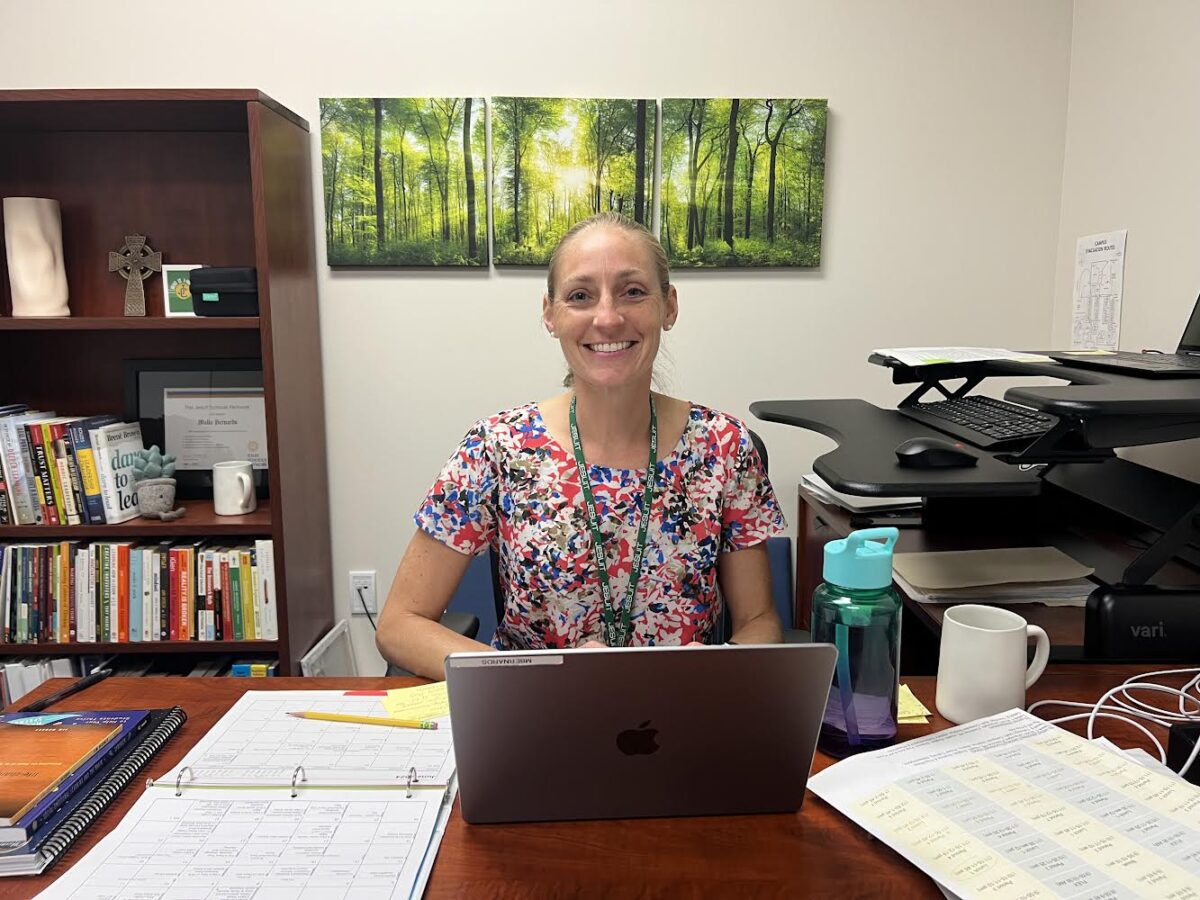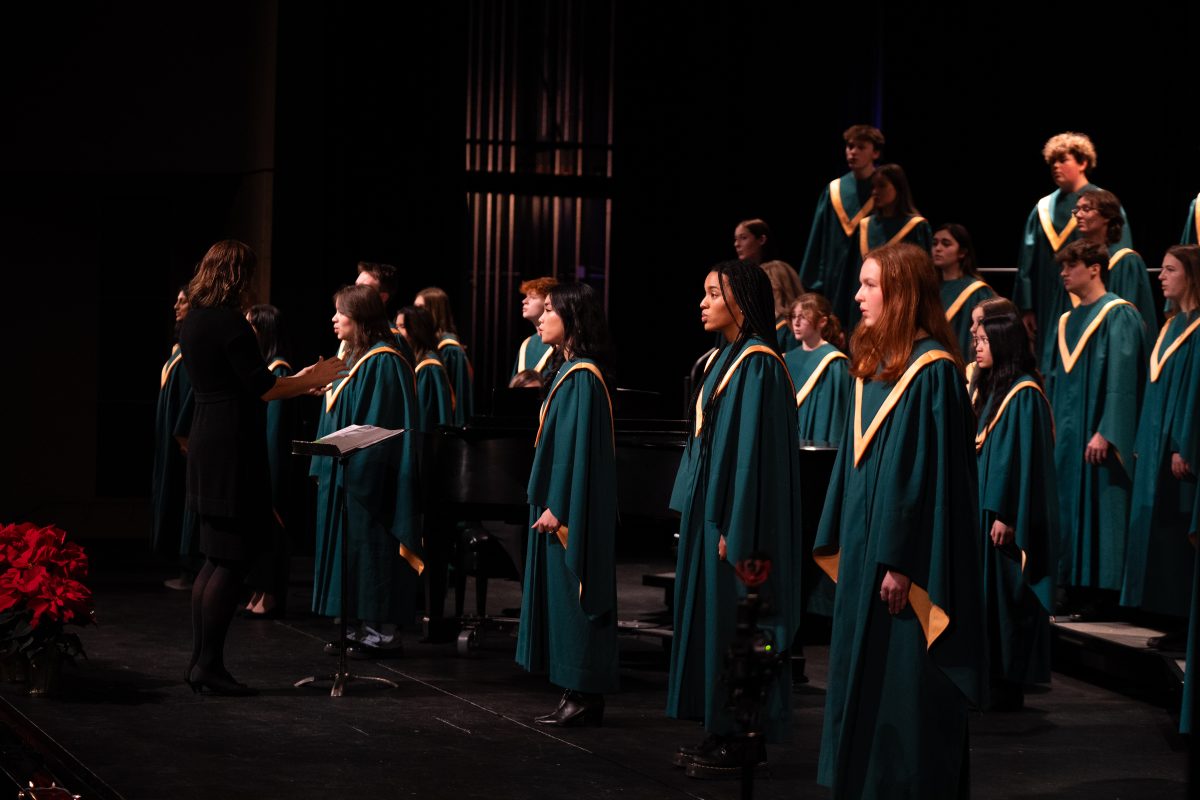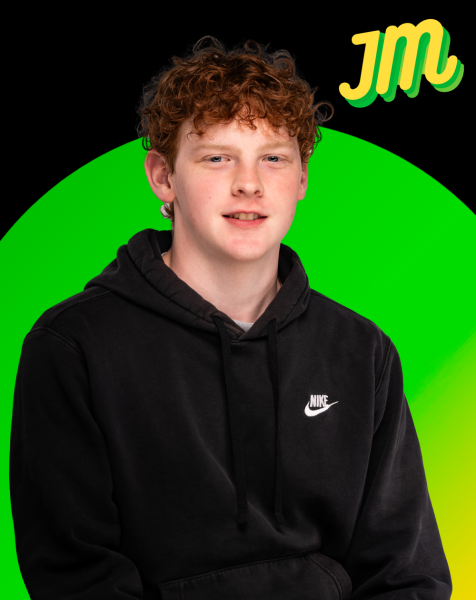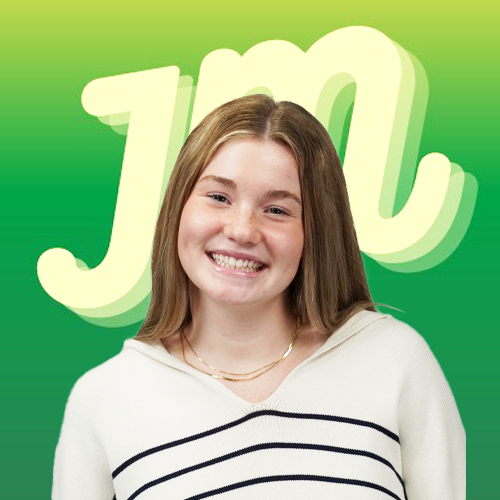Ms. Bernards has been working at Jesuit for 10 years in the history department, where she taught 7 different classes varying from World History to AP psychology.
Her new role is as vice principal of professional development information.
“The vice principal of professional development information is the least student and parent facing the Vice Principal, but has the most student impact,” Bernards said.
She works with teachers to ensure that they can be the best teachers possible and have professional development opportunities, leading to the best learning possible.
“My goal, of course, for all the teachers is that we’re creating the best student experience in the classroom.”
She is also “doing all the professional development work with the teachers,” Mrs. Bernards said.
She also mentioned that she wants “all students to have a sense of belonging and have a really good community feel in the classroom.”
With the new job, new challenges arise for Mrs. Bernards.
“There’s always a learning curve. So that’s where I am right now.”
She has recognized “at Jesuit, we have a great community and people want to be here. So that’s really encouraging. We usually get a heavy demand of applicants.”
Mrs. Bernards has many goals for this academic year.
“To make sure that we’re building the best community we can for our students and the most supportive community.”
Full Interview Transcript
Q: How long have you been at Jesuit?
A: “This is year ten”
Q: What roles have you had working here?
A: “I have been a teacher in the history department. I’ve taught world history, US HIstory, government economics, AP macroeconomics and AP Psychology. Then I was a history department chair and now I am the vice Principal of professional development”.
Q: Can you describe your new role?
A: “Yeah so the vice principal of professional development information is the least student and facing vice principal but has the most student impact. So I work with the teachers and I work on things like instructional coaching, making sure that teachers have professional development opportunities, so that they can bring their best teacher selves to the classroom and my goal, of course, for all teachers is that we’re creating the best student experience in the classroom.So that’s really fun.”
Q:So what are you most excited about doing this new role?
A:I’m most excited about doing all the professional development work with the teachers. When we’re working on a couple of key things this year. The first is that we’re really working to build community in classrooms. We really want students to feel a sense of belonging, and have a really good community feel in the classroom. We want classrooms to be active and engaging learning environments. So those are some things that teachers are gonna be working on this year. And then we’re always looking at tech tools. So the last few years, we’ve really kind of streamlined Canvas home pages and things like that to make it easier for students to kind of see similar home pages from all of their classes. And then we were looking at, importantly, all the generative AI stuff, and then how we can use those tools in classes. And what’s that gonna mean for media classes versus a history class versus a math class. We are looking at what kinds of tools we can use to help students learn about an employee so that when you go forward in the world, you know how to use AI, to your benefit, but also with integrity. We also wrestle and discern, what’s the best way to use this tool, but also how do we become creative beings and owners of our own creative products. So and that’s, that’s the thing. We still want students to be able to think for themselves, right for themselves, develop their own voice, all that stuff. Yeah. So that’s exciting.
Q: What challenges do you perceive with this new role?
A: Like any new job, there’s always a learning curve. So that’s where I am right now, is just the learning curve. But I think it’s a really interesting time to be in education overall. You know, challenges facing education generally are a waning interest in people wanting to be in education, a lot of educators are leaving the field of education right now, and administrators as well. So the culture around teaching and learning in the wider world can be tough. At Jesuit, we have a great community and people want love to be here for the most part. So that’s really encouraging. We usually get a heavy demand of applicants and things like that, but I think there are those types of tensions that exist. I think it’s there. We’re working with generally other issues of you know, diversity, equity inclusion, making sure all students are feeling included. Those are always things that are in the forefront of our minds here at Jesuit. But we don’t have everything solved with that. Making sure that LGBTQ plus students feel included. Making sure that students have good mental and physical health and well being. Again, we’ve seen nationwide trends and even here at Jesuit where students have struggled more with mental health since COVID. So really making sure our students are cared for. So those are things that our team is aggressively working on all the time, right, trying to make sure that we’re building the best community we can for our students and the most supportive community. So other than that, it’s just like textbooks and that’s the logistics of a job.











